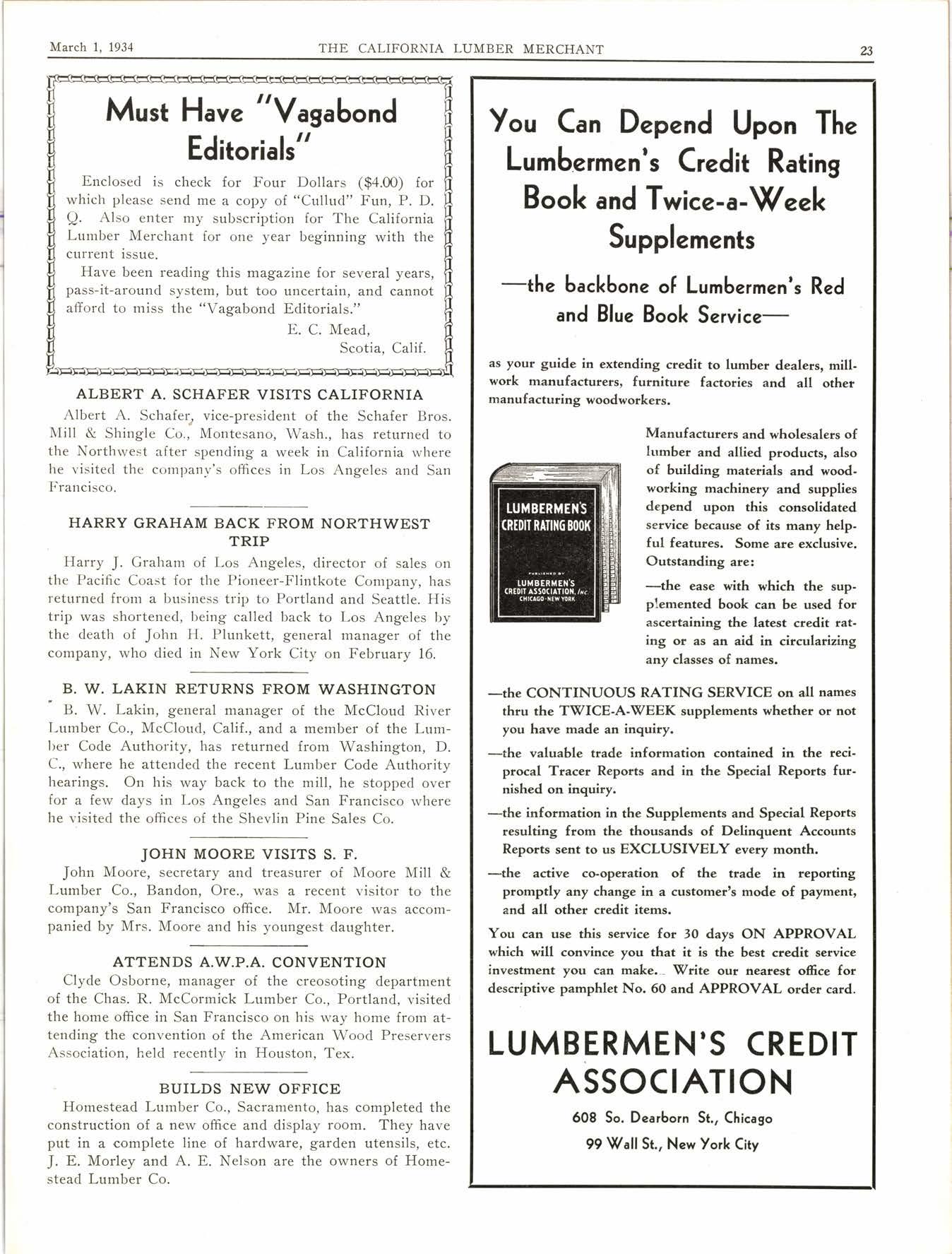
2 minute read
Order A]]ecting Pacific Coast Lumber Rates
Washington, Feb. 20.-An orcler by National Recovery Administrator Hugh S. Johnson grantir.rg rate relief to petitioning groups of Pacific Coast lumber shippers tvas announced today.
The order, dated February 19 and effective February 22, modified certain rate schedules and rate-making rules, heretofore promulgated by the Lumber Code Authority, in a way to meet complaints against those rates made by various West Coast lumber and lumber-shipping interests. A public hearing on those complaints was conducted in Washington by Deputy Administrator E. A. Selfridge January 9-13. Many witnesses appeared and voluminous testimony was taken. General Johnson's order is based upon Deputy Selfridge's report thoroughly analyzing this rr.rass of evidence, and accompanied by an elaborate study of the rate-structure factors involved, made by NRA's Research and Planning Division.
The appeal, which was against "Bulletin No. 32" and against Paragraph Three of the Rules and Regulations of "Bulletin Forty-five" of the Lumber Code Authoritv was made by: the Willamette Valley Lumbermen's Association; certain Washington and Oregon shippers to California; California Wholesale Lumber Association; Merced Lumber Company (California) ; Pacific Coastwise Lumber Conference.
The genesis of the situation was about this: A "Bulletin No. 14" issued by the Lumber Code Authority provided that lumber shipped by rail from Oregon and Washington should be priced at points of delivery by adding to the f.o.b. mill minimum prices the 1egal1y established rate of freight to be applied to the weight of the lumber itern as indicated therein. "Bulletin No. 32", in effect, suspended these provisions and prescribed that when sales are made on a delivered basis there shall be added to the minimum mill price the actual cost of transportation of the individual shipper, and also that sales to California by rail shall in no case be at a lower minimum price than sales of the same item by water.
General Johnson's order cancels "Bulletin 32" and substitutes for it and for Paragraph 3 of Bulletin 45 (which was a kindred rule to that of Bulletin 32) fifteen typewritten pages of rules and rates for the West Coast lumber shipments in question. What they do is to define destination points affected, provide methods of calculating delivered prices for water and rail shipments and for the necessary absorptions and deductions, establish minimum transportation rates to destination (including the cost of moving from ship's tackle and loading on carriers.)
General Johnson's order says that " on the basis of the showing made at the hearings justice requires that said applications be granted."
The principle involved, as summarized by Deputy Selfridge, is that " in order to maintain free and fair competion between shippers to common competitive markets, it is necessary that partial absorptions of published established transportation costs, whether by rail or by water, be permitted so that the trade and the consuming public may be assured of fair and stabilized prices at points of delivery to prevent ruinous and unfair competition."
Bound Volumes o[ NRA Codes
NRA Codes of Fair Competition approved under the National Industrial Recovery Act are being compiled in bound volumes and can be purchased through the Superintendent of Documents, Government Printing Office, Washington, D. C., at a pri,ce of $1.50 per volume.








